Lesson 10
Piecewise Linear Functions
10.1: Notice and Wonder: Lines on Dots (5 minutes)
Warm-up
This warm-up connects to the previous lesson and is meant to elicit ideas that will be helpful for students in the next activity in this lesson. Students should notice that the points in the graph are not connected and wonder how well the lines model the sections of data they span, which is explored further in the next activity. For that reason, the discussion should focus on collecting all the things students notice and wonder but not explaining the things they wonder.
Launch
Tell students they will look at a graph and their job is to think of at least one thing they notice and at least one thing they wonder about the graph. Display the graph for all to see and give 1 minute of quiet think time.
Ask students to give a signal when they have noticed or wondered about something.
Student Facing
What do you notice? What do you wonder?
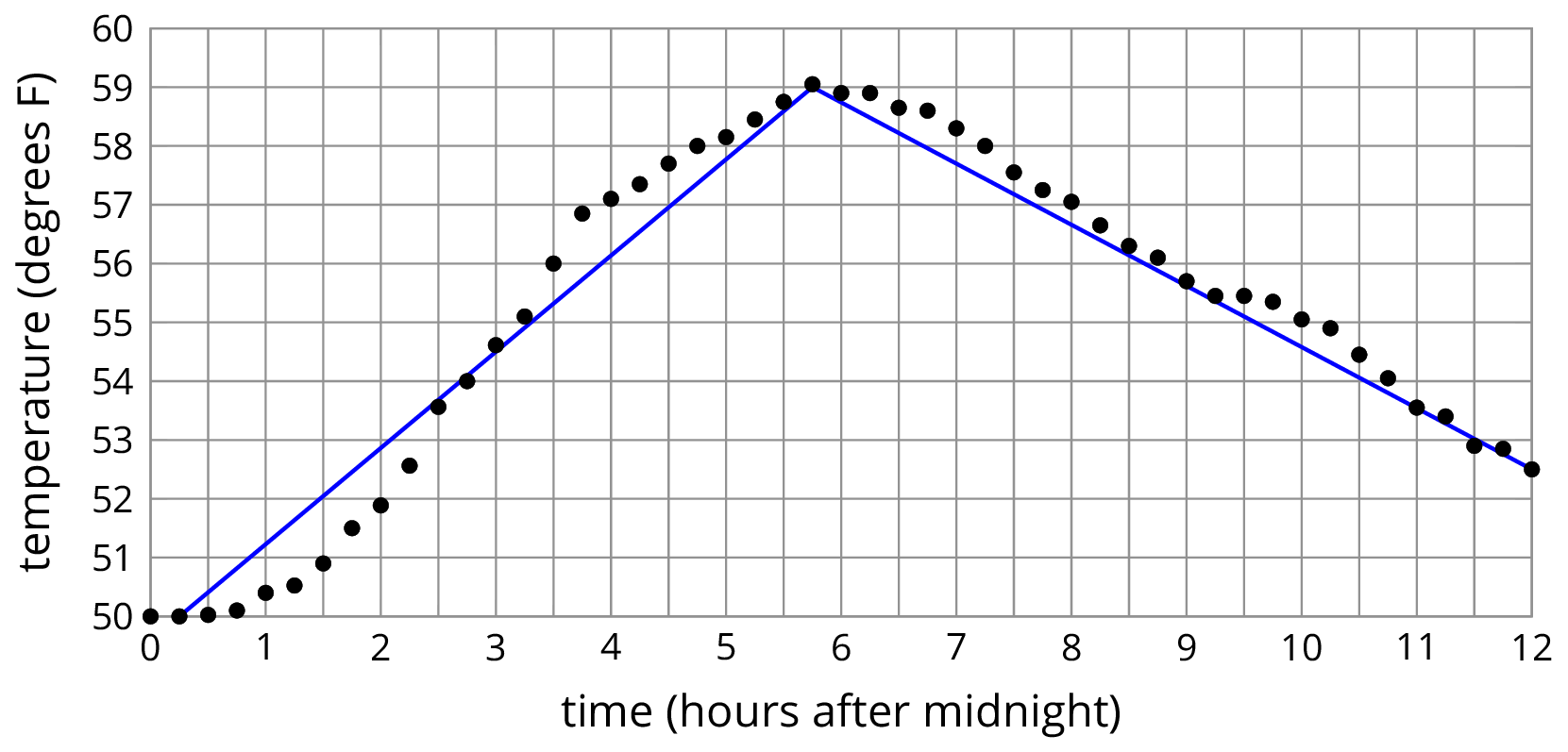
Student Response
For access, consult one of our IM Certified Partners.
Activity Synthesis
Ask students to share their ideas. Record and display the responses for all to see. If no one mentions that the dots are not connected or what they think the blue lines mean, bring these ideas to their attention and tell them they will be working more with these ideas in the next activity.
10.2: Modeling Recycling (10 minutes)
Activity
In this activity, students work with a graph that clearly cannot be modeled by a single linear function, but pieces of the graph could be reasonably modeled using different linear functions, leading to the introduction of piecewise linear functions (MP4). Students find the slopes of their piecewise linear model and interpret them in the context.
Monitor for students who:
- Choose different numbers of line segments to represent the function (e.g., 3, 4, and 5 segments).
- Choose different endpoints for the segments (e.g., two students have chosen 4 segments but different placement of those segments).
Launch
Arrange students in groups of 2. Display images for all to see. Tell students that sometimes we model functions with multiple line segments in different places. These models are called piecewise linear functions. For example, here are two different piecewise linear models of the same temperature data (note that the first image is not the same as the image in the warm-up):
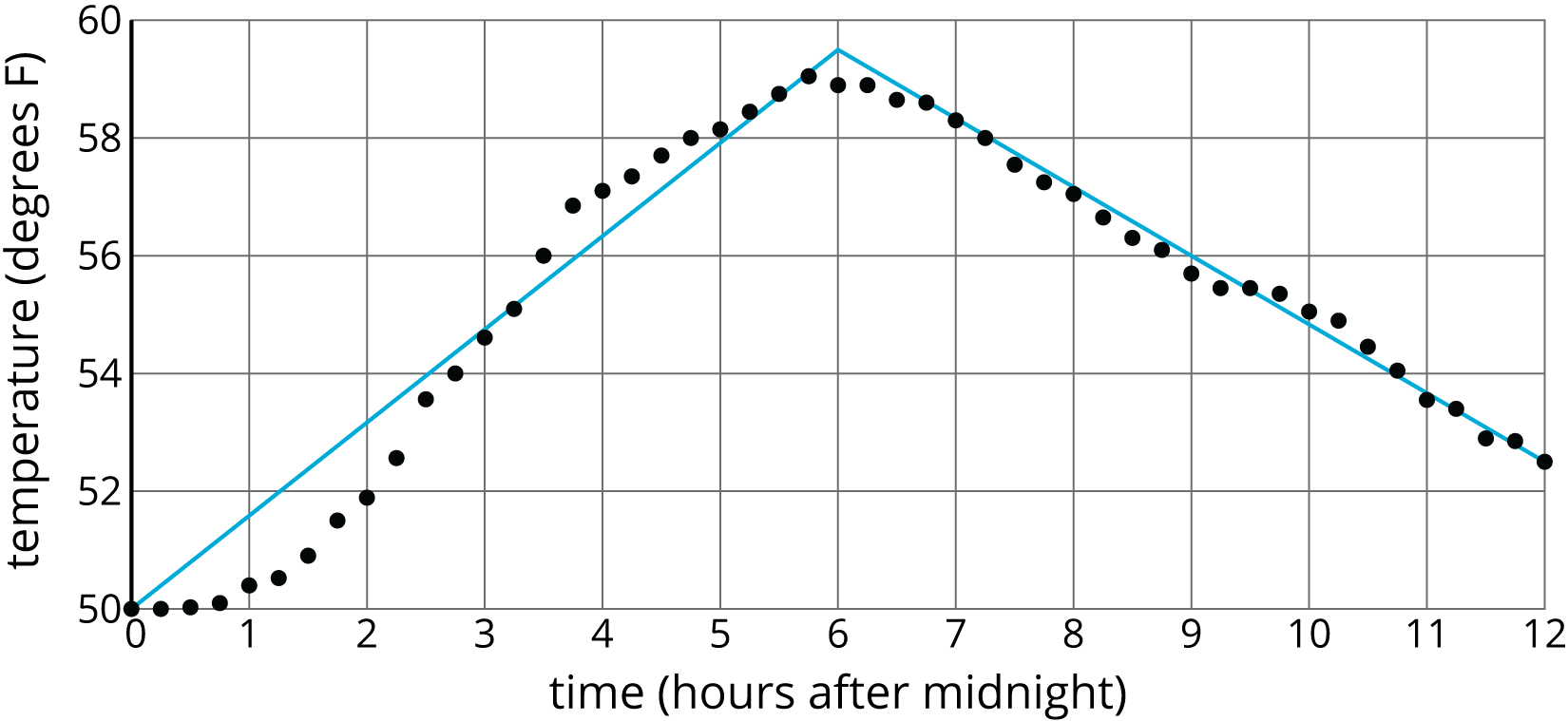

Give students 3–5 minutes of quiet work time and then time to share their responses with their partners. Follow with a whole-class discussion.
Supports accessibility for: Memory; Language
Design Principle(s): Support sense-making; Optimize output (for explanation)
Student Facing
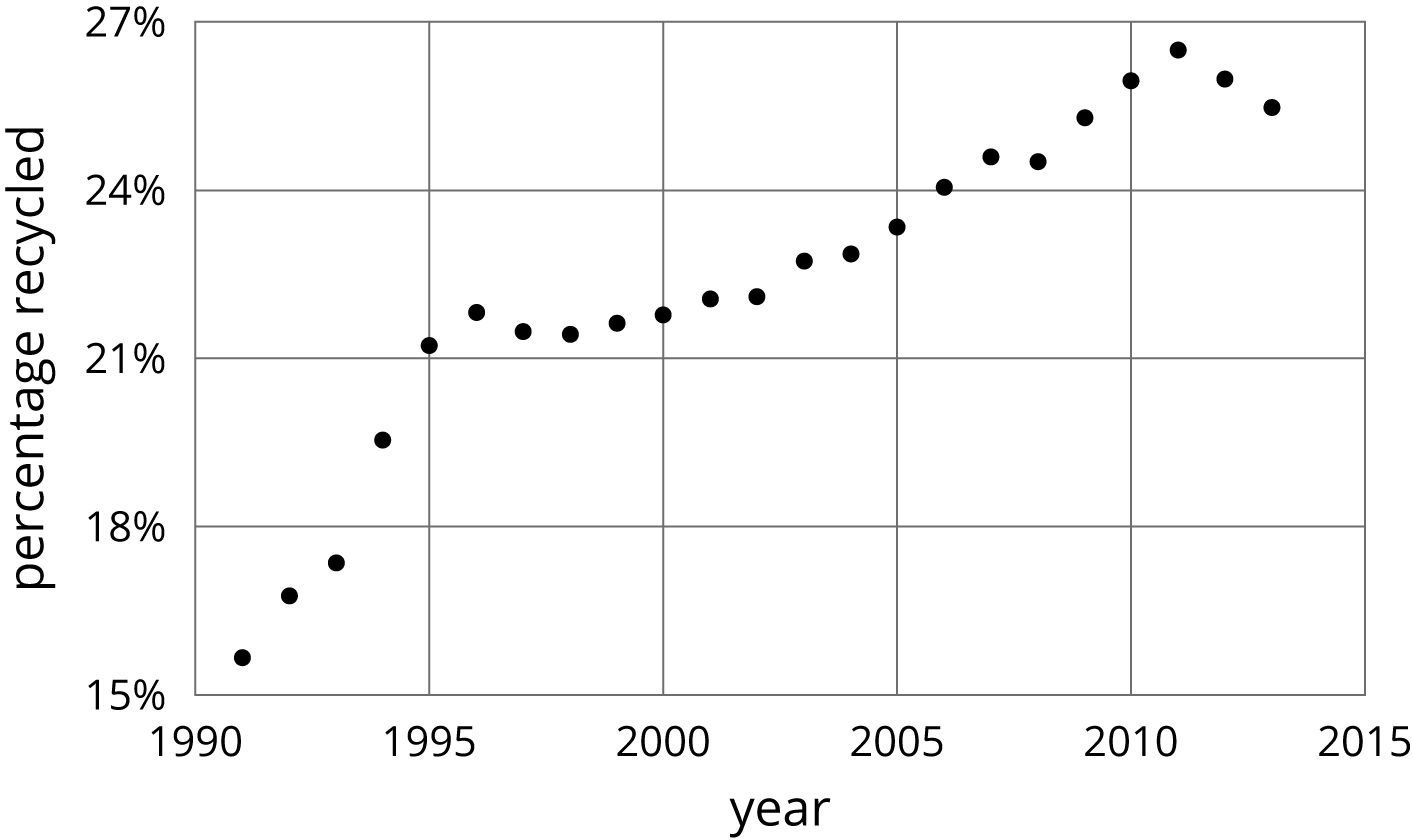
- Approximate the percentage recycled each year with a piecewise linear function by drawing between three and five line segments to approximate the graph.
- Find the slope for each piece. What do these slopes tell you?
Student Response
For access, consult one of our IM Certified Partners.
Activity Synthesis
Select previously identified students to share their responses and display each student’s graph for all to see. Sequence the student responses in order from fewest to greatest number of segments.
To highlight the use and interpretation of piecewise linear models, ask:
- “What do the slopes of the different lines mean?” (The slopes of the lines tell us the rate of change of the different linear pieces for the specific intervals of time.)
- “Can we use this information to predict information for recycling in the future?” (If the data continues to decrease as it does from 2011 to 2013, yes. If the data starts to increase again, our model may not make very good predictions.)
- “What are the benefits of having fewer segments in the piecewise linear function? What are the benefits of having more segments?” (Fewer segments are easier to write equations for and help show long-term trends. More segments give a more accurate model of the data.)
10.3: Dog Bath (15 minutes)
Activity
The purpose of this activity is to give students more exposure to working with a situation that can be modeled with a piecewise linear function. Here, the situation has already been modeled and students must calculate the rate of change for the different pieces of the model and interpret it in the context. A main discussion point should be around what the different rates of change mean in the situation and connecting features of the graph to the events in the context.
Launch
Students in groups of 2. Give 3–5 minutes of quiet work time and then ask them to share their responses with a partner and reach an agreement. Follow with a whole-class discussion.
Design Principle(s): Maximize meta-awareness; Support sense-making
Student Facing
Elena filled up the tub and gave her dog a bath. Then she let the water out of the tub.
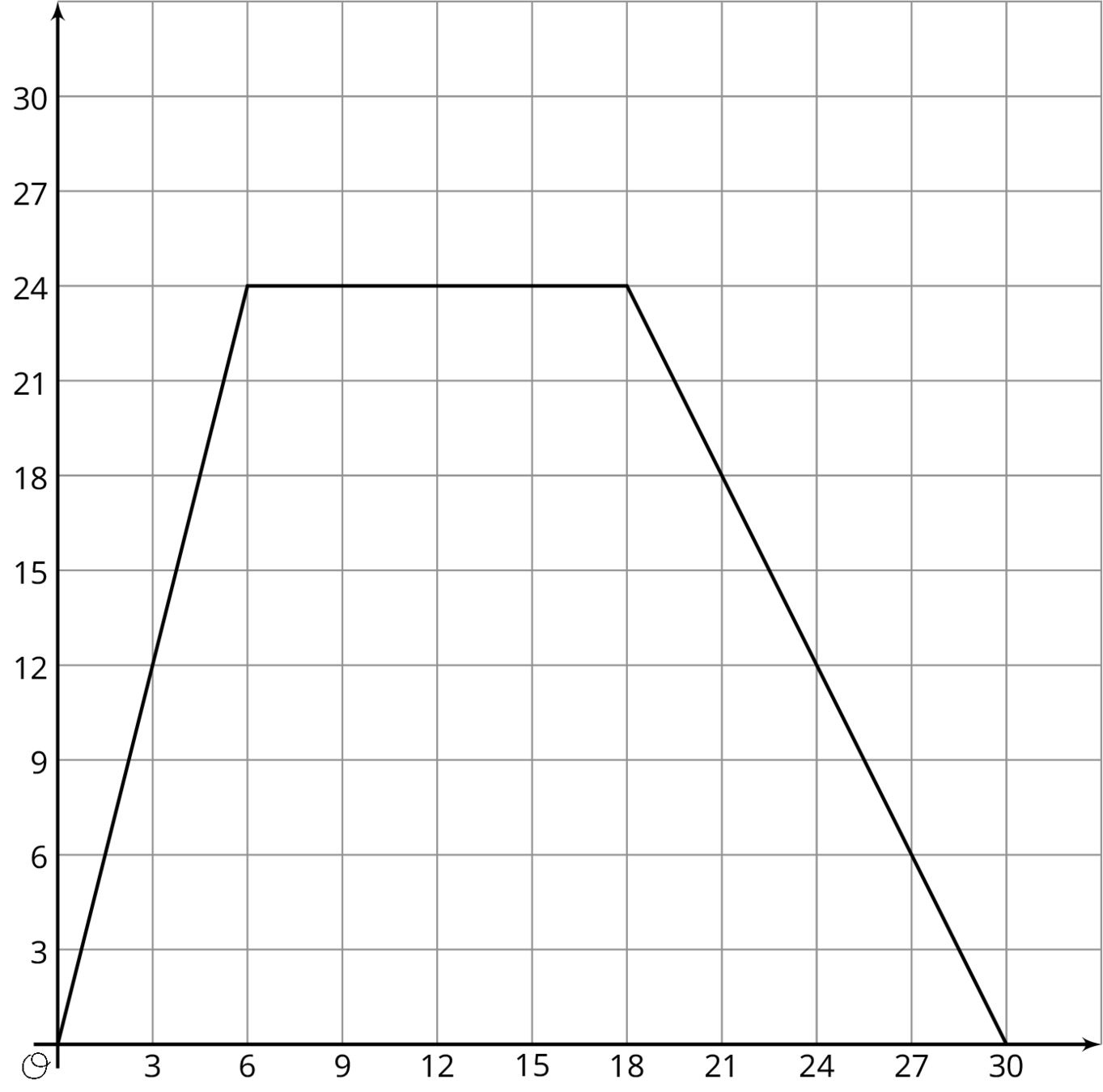
- The graph shows the amount of water in the tub, in gallons, as a function of time, in minutes. Add labels to the graph to show this.
- When did she turn off the water faucet?
- How much water was in the tub when she bathed her dog?
- How long did it take for the tub to drain completely?
- At what rate did the faucet fill the tub?
- At what rate did the water drain from the tub?
Student Response
For access, consult one of our IM Certified Partners.
Activity Synthesis
The purpose of this discussion is for students to make sense of what the rate of change and other features of the model mean in the context of this situation. Consider asking the following questions:
- “Did the tub fill faster or drain faster? How can you tell?” (The tub filled faster. The slope of the line representing the interval the water was filling the tub is steeper than the slope of the line representing the interval the water was draining from the tub.)
- “If you were going to write a linear equation for the first piece of the graph, what would you use for \(m\)? For \(b\)?” (I would use \(m=4\) and \(b=0\), because the tub filled at a rate of 4 gallons per minute and the initial amount of water was 0.)
- “Which part of the graph represents the 2 gallons per minute you calculated?” (The last part of the piecewise function has a slope of -2, which is when the tub was draining at 2 gallons per minute.)
10.4: Distance and Speed (5 minutes)
Optional activity
This activity is similar to the previous activity in that students are interpreting a graph and making sense of what situation the graph is representing. The difference here is that the specificity with numbers has been removed, so students need to think a bit more abstractly about what the changes in the graph represent and how they connect to the situation.
Monitor for students describing the graph with different levels of detail, particularly for any students who state that the car got up to speed faster than the car slowed down to 0.
Launch
Give students 1–2 minutes of quiet work time, followed by a whole-class discussion.
Supports accessibility for: Attention; Social-emotional skills
Student Facing

The graph shows the speed of a car as a function of time. Describe what a person watching the car would see.
Student Response
For access, consult one of our IM Certified Partners.
Student Facing
Are you ready for more?
The graph models the speed of a car over a function of time during a
3-hour trip. How far did the car go over the course of the trip?
There is a nice way to visualize this quantity in terms of the graph. Can you find it?
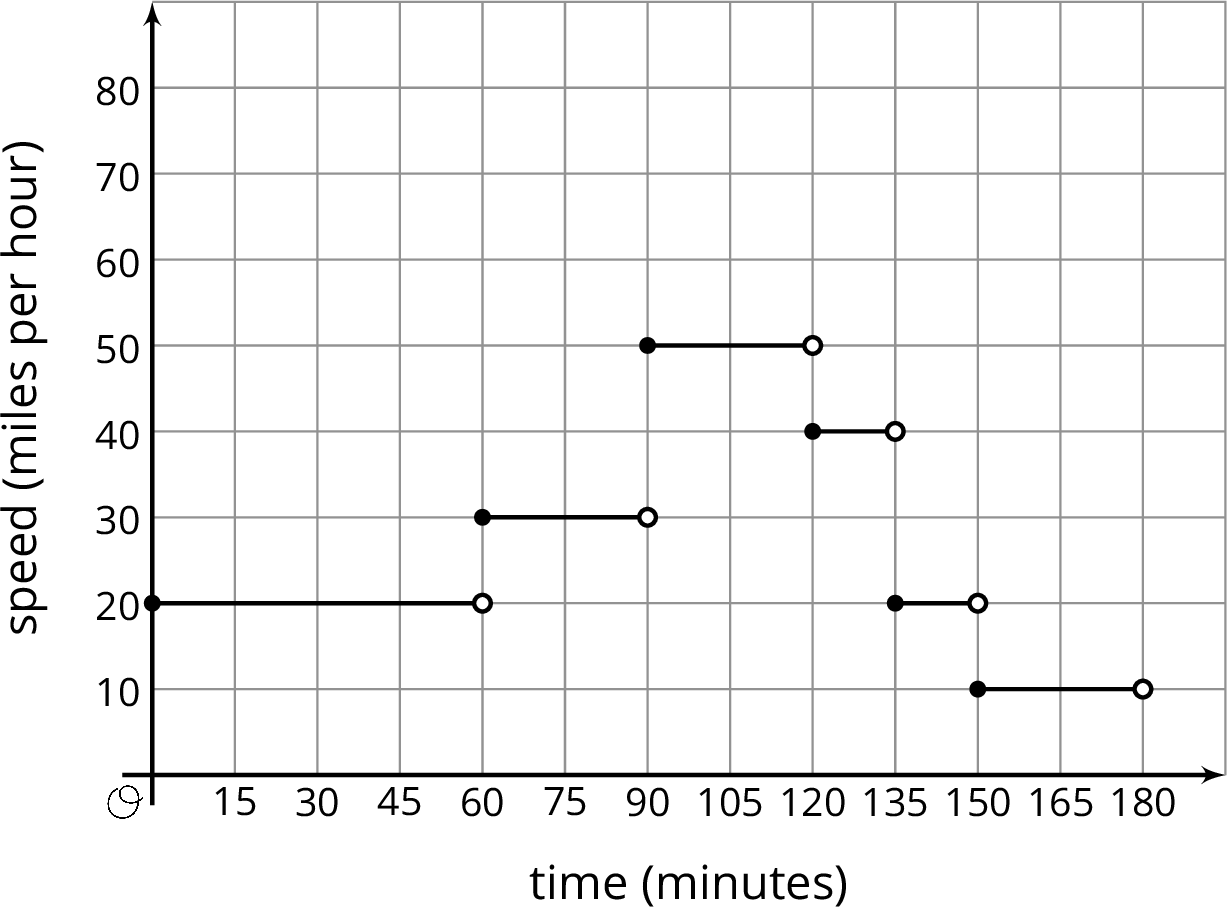
Student Response
For access, consult one of our IM Certified Partners.
Activity Synthesis
The purpose of this activity is for students to connect what is happening in a graph to a situation. Display the graph for all to see. Select previously identified students to share the situation they came up with. Sequence students from least descriptive to most descriptive. Have students point out the parts on the graph as they share their story about the situation.
Consider asking the following questions:
- “Did the car speed up faster or slow down faster? How do you know?” (The car sped up faster because the first part of the model is steeper than the third part of the model.)
- “How did you know that the car stayed that speed for a period of time?” (The graph stays at the same height for a while, so the speed was not changing during that time.)
Design Principle(s): Optimize output (for explanation)
Lesson Synthesis
Lesson Synthesis
Ask students, “How would you describe a piecewise linear function to someone who has never seen one?” and give 1 minute of quiet think time and then time to share their response with a partner. Invite partners to share their responses with the class while recording them for all to see.
(A piecewise linear function is a function whose graph is pieced together out of line segments. For different ranges of input, the output is changing at different approximately constant rates so a different line is used for each range.) If students don’t include the different constant rates over different intervals of the independent variable, make sure that is made clear.
If time allows, ask students, “Can you think of another situation that changes at different constant rates over time?” and give partners 1 minute of think time before selecting groups to share their situations.
10.5: Cool-down - Lin’s Phone Charge (5 minutes)
Cool-Down
For access, consult one of our IM Certified Partners.
Student Lesson Summary
Student Facing
This graph shows Andre biking to his friend’s house where he hangs out for a while. Then they bike together to the store to buy some groceries before racing back to Andre’s house for a movie night. Each line segment in the graph represents a different part of Andre’s travels.
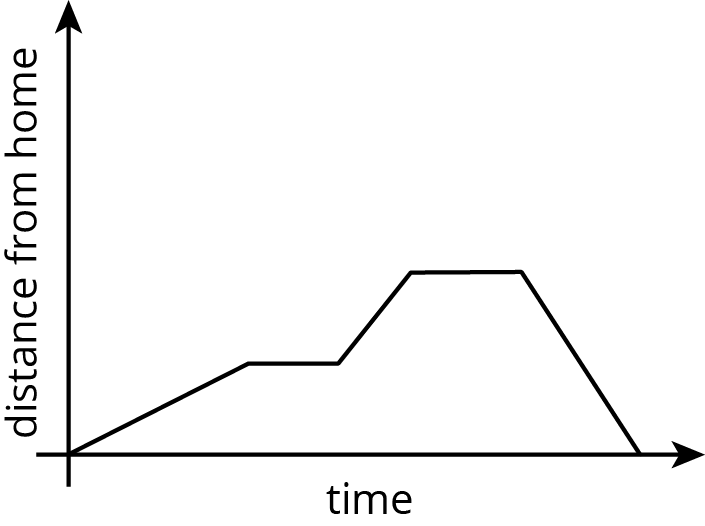
This is an example of a piecewise linear function, which is a function whose graph is pieced together out of line segments. It can be used to model situations in which a quantity changes at a constant rate for a while, then switches to a different constant rate.
We can use piecewise functions to represent stories, or we can use them to model actual data. In the second example, temperature recordings at several times throughout a day are modeled with a piecewise function made up of two line segments. Which line segment do you think does the best job of modeling the data?
